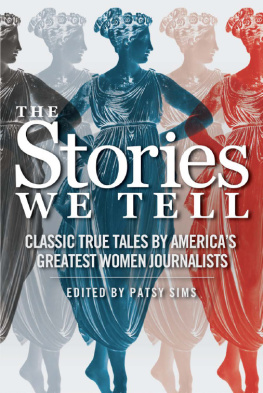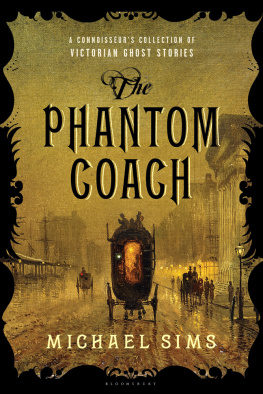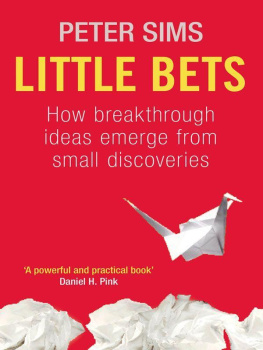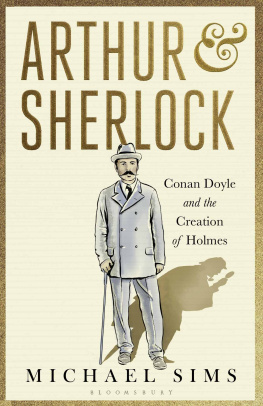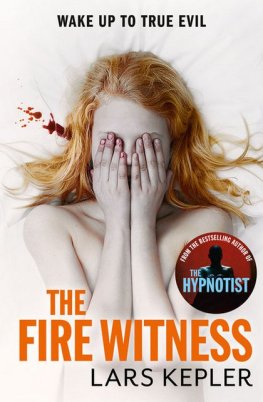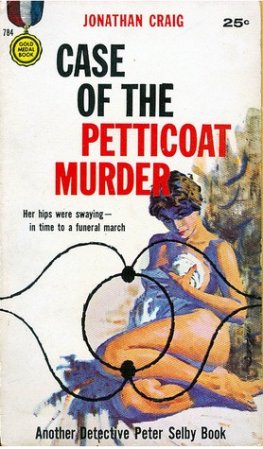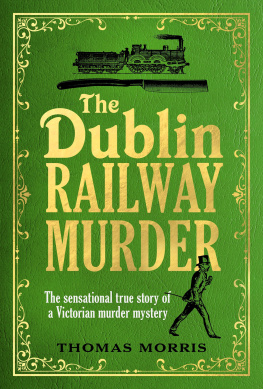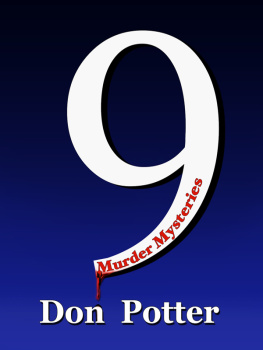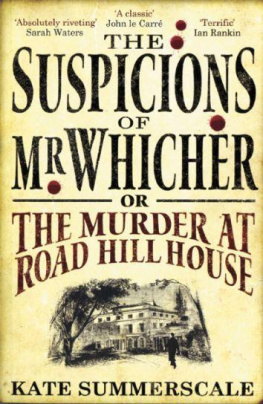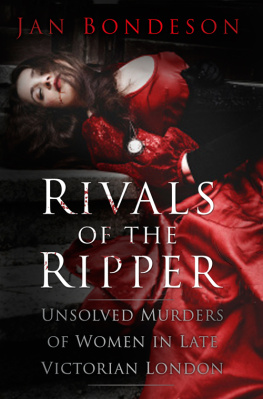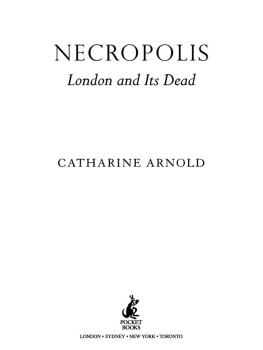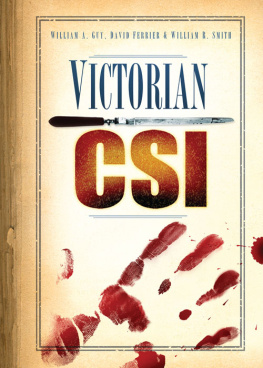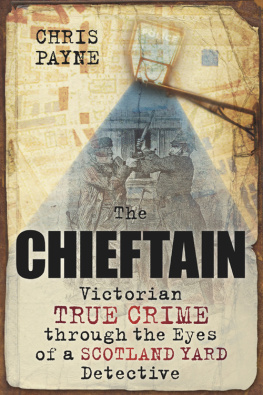The Story of Charlottes Web
The Penguin Book of Victorian Women in Crime (editor)
Draculas Guest: A Connoisseurs Collection of Victorian Vampire Stories (editor)
In the Womb: Animals
(companion to the National Geographic Channel TV series)
The Penguin Book of Gaslight Crime (editor)
Apollos Fire: A Day on Earth in Nature and Imagination
Arsne Lupin, Gentleman- Thief (editor)
The Annotated Archy and Mehitabel (editor)
Adams Navel: A Natural and Cultural History of the Human Form
Darwins Orchestra: An Almanac of Nature in History and the Arts
The Dead Witness
A Connoisseurs Collection of Victorian Detective Stories

Edited by Michael Sims

First published in Great Britain 2011
Electronic edition Published in November 2011 by Bloomsbury Publishing Plc
Compilation copyright 2011 by Michael Sims
Introductions copyright 2011 by Michael Sims
The moral right of the author has been asserted
All rights reserved You may not copy, distribute, transmit, reproduce or otherwise make available this publication (or any part of it) in any form, or by any means (including without limitation electronic, digital, optical, mechanical, photocopying, printing, recording or otherwise), without the prior written permission of the publisher. Any person who does any unauthorised act in relation to this publication may be liable to criminal prosecution and civil claims for damages
Bloomsbury Publishing, London, New Delhi, New York and Sydney
50 Bedford Square, London WC1B 3DP
A CIP catalogue record for this book is available from the British Library
eISBN 978 1 4088 1885 5
www.bloomsbury.com
www.walkerbooks.com
Visit www.bloomsbury.com to find out more about our authors and their books You will find extracts, author interviews, author events and you can sign up for newsletters to be the first to hear about our latest releases and special offers
To the other four of the Five Investigators (circa 1970):
my brother, David Sims
and my cousins J. R. Yow, Greg Norris, and Ken Norris
Contents
Here is my lens. You know my methods.
Sherlock Holmes

When I unwrapped the books, I found a whole new world. I was fifteen at Christmas 1973, when I received as a gift from my mother a book I had specially requestedhad, in fact, insisted upon. It was William S. Baring-Goulds two fat, beautiful volumes of The Annotated Sherlock Holmes. When the oversize books arrived in the mail, the postman had to honk his car horn because he couldnt fit the package into our big mailbox out by the gravel road. The mailbox was my connection to the world. We lived in rural eastern Tennessee, without a car or a telephone, but somewhere I had learned about mail-order book clubs and read about these booksand decided that I must have them.
That Christmas night I sat up almost until dawn, savoring details about hansom cabs and dark lanterns and why Dr. Roylotts snake in The Adventure of the Speckled Band could not have been a snake. These volumes taught me that in every work of literature you can find an entire cosmos of history and biography. Victorian England unfolded out of Baring-Goulds pages like a pop-up book and later blossomed into my love for crime writers such as Arthur Conan Doyle, Grant Allen, and Catherine Louisa Pirkis, as well as their colleagues in the larger world of literatureLewis Carroll and George Eliot, Charles Dickens and Robert Louis Stevenson. I found a window into history, which formerly I had considered opaque. I found escape from the confusions of adolescence. And I reveled in the kind of writing that William Dean Howells once disparaged as a complicated plot, spiced with perils, surprises, and suspenses.
I kept exploring the field of Victorian detective stories, and the result, almost four decades after I opened The Annotated Sherlock Holmes, is The Dead Witness. Aiming to represent the vigor and charm of the Victorian detective story at its best, this anthology features works that were originally published between 1837 and 1915: numerous short stories, a couple of novel excerpts, a magazine profile, a newspaper article, and the transcript of a coroners inquest. Investigators hail from England, Scotland, Australia, Canada, France, and the United States. You will find female and male detectives, police officers and private investigators, a Canadian half-native backwoods detective, a blind man, and a teenage boycharacters ranging the moral spectrum from Father Brown to Jack the Ripper.
In the long view of history, detectives are a recent phenomenon. Crime is not. As archaeologists often demonstrate, deception, theft, and violence haunted society even before we left caves or invented agriculture. Consequently, because our imagination is as natural as our penchant for brutality, crime has flourished as a cultural theme from Antigone to Law & Order.
Many people think that Sherlock Holmes was among the earliest detectives in literature. In The Dead Witness, however, he doesnt appear chronologically until about halfway through, because he had numerous ancestors. Among the legion of villains and heroes in world literature are a handful of fascinating proto-detectives who waxed Sherlockian long before Loveday Brooke and November Joe and the other characters you will meet in this book. These figures insist upon the importance of justice and evidence in criminal casesrather than accusation and tortureor demonstrate a rational approach to problem solving. They pay attention and theorize about what they observe. While the stories in this volume are adventurous, suspenseful, and sometimes amusing, the detectives in them behave in many ways like scientists, luxuriating in the act of reasoning while benefiting from its practical results.
The biblical Daniel seems to have been the first fictional detective. Aside from his roles as interpreter of dreams, tamer of lions, killer of dragons, and spouter of visions and prophecies, Daniel participates in a couple of thorny criminal cases. First he solves the earliest locked-room mystery on record, which is also an expos of the follies of idol worship. King Cyrus the Persian asks Daniel, Why do you not worship Bel? and Daniel replies cheekily that he worships a living god, not an idol. Cyrus points out that every night Bel consumes a vast amount of wine and food, not to mention forty sheep, and must therefore be quite authentic. Daniel laughs and says, Do not be deceived, O King; for this is but clay inside and brass outside, and it never ate or drank anything. Furious, Cyrus orders his priests to prove Bels reality or die. They depart, telling the king to lay out the usual daily god food himself. The next morning its gone, and Cyrus prepares to execute Daniel for blasphemy.
In the kind of scene that would later become standard in detective stories, Daniel stands among suspects and accusers and unravels the true story. In doing so he provides the reconfiguring of the narrativethe reshuffling of what the reader thought had happened into what actually happenedthat is one of the great aesthetic pleasures of detective stories. The night before, Daniel had secretly covered the stone floor with a fine layer of ash. As the king and priests stand before him, he points down at the floor and explains. His ploy has recorded the nocturnal scurries of the villains, the footprints of the priests and their families, who have entered the sanctum through a secret entrance under a table. Cyrus executes them instead and applauds Daniel.
Next page

